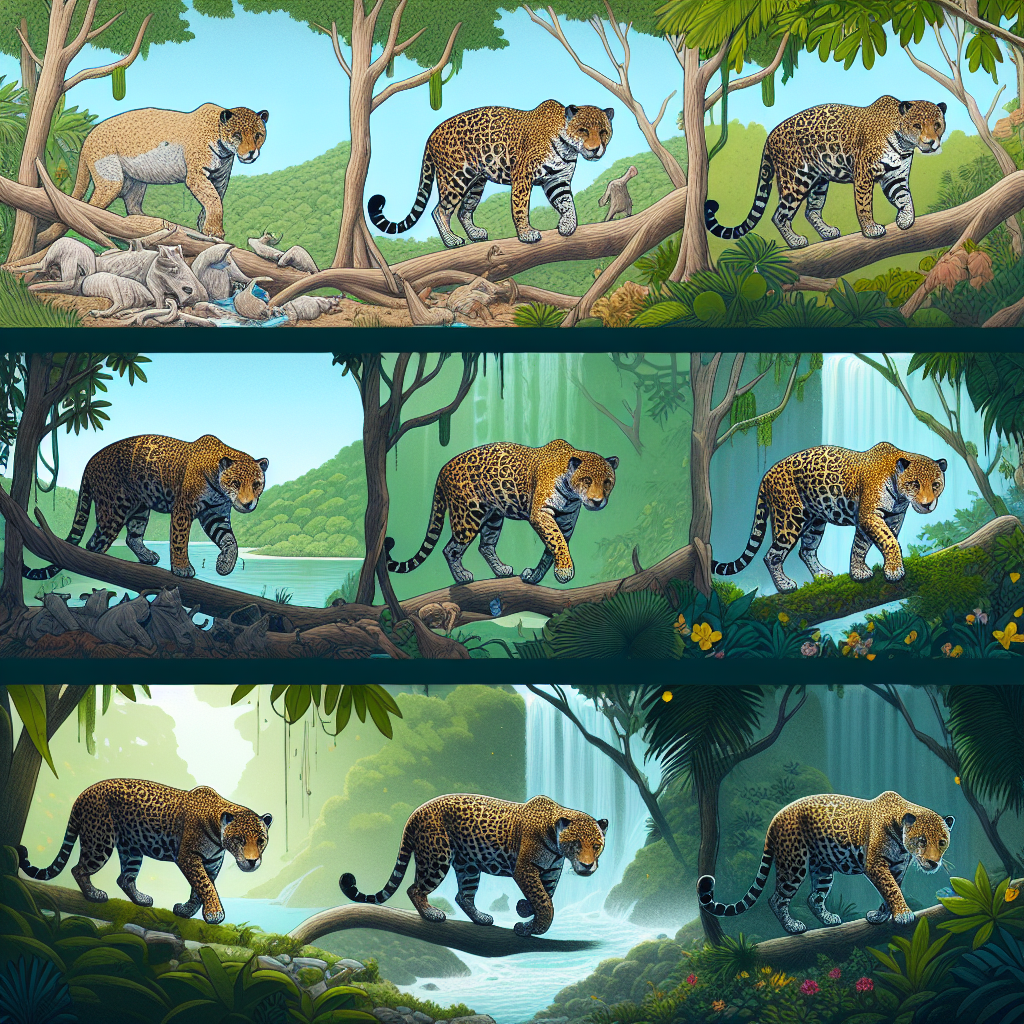From Rescue to Recovery: The Story of Jaguars in Tulum
The Jaguar’s Falconry in Tulum’s Ecosystem
Jaguar (Panthera onca), the largest cat in the Americas, plays a critical role in the Tulum ecosystem, a region known for its lush jungles, vibrant coral reefs, and rich biodiversity. Located on the Caribbean coast of Mexico, Tulum offers a habitat where jaguars thrive, yet face threats primarily due to human activities. The jaguar’s existence is crucial for maintaining the delicate balance within its environment, particularly as it serves as an apex predator. By preying on herbivores, jaguars help control populations, promoting vegetative diversity and supporting the overall health of their ecosystem.
Historical Context of Jaguars in Tulum
Historically, jaguars held a significant position in Mayan culture, symbolizing strength, power, and fertility. Petroglyphs found in ancient ruins depict jaguars in ceremonial contexts, highlighting their revered status in the region’s mythology. However, as urbanization and tourism began to escalate in Tulum, the jaguar population faced immense challenges. Deforestation, habitat fragmentation, and poaching diminished their numbers, threatening not only the species but also the ecological integrity of the area.
The Rise of Conservation Efforts
In response to the concerning decline of the jaguar population, various conservation initiatives have emerged in Tulum over the past two decades. Local non-profit organizations, environmental authorities, and wildlife enthusiasts have joined forces to develop strategic plans aimed at protecting jaguars and their habitats. One key initiative is the Maya Forest Corridor project, which seeks to create a sustainable wildlife corridor connecting critical habitats across the Yucatán Peninsula. This corridor is designed to facilitate jaguar movement, breeding, and foraging, ultimately reinforcing genetic diversity and resilience.
Rescue Operations and Rehabilitation Programs
Among the notable efforts to rescue and rehabilitate jaguars is an innovative program implemented by wildlife organizations in Tulum. Rescued from illegal captivity or areas of human encroachment, jaguars undergo stringent rehabilitation processes aimed at restoring their natural behaviors. The first step in this process often involves medical assessments, behavioral monitoring, and socialization in semi-wild environments. Rescued jaguars are trained to hunt and interact naturally before being released into protected reserves.
Animal welfare activists and veterinarians are crucial in this rescue and rehabilitation journey. Their expertise aids in assessing the health and psychological state of each jaguar, ensuring they can adapt back into the wild. This endeavor highlights a growing recognition of wildlife rights and the importance of treating animals with dignity and respect.
Tulum’s Role as a Conservation Model
Tulum’s journey from a tourism hotspot to a conservation model signifies a pivotal shift in this coastal town’s narrative. With an increasing number of eco-tourism businesses emerging, the emphasis is now on sustainable practices that prioritize the conservation of local wildlife, particularly jaguars. Local operators provide guided tours focused on the ethical observation of wildlife, educating visitors about jaguar ecology and the importance of biodiversity.
Moreover, various community-led conservation education programs have been established to engage the local population in conservation efforts. Workshops and educational campaigns emphasize the significance of preserving the natural habitats of jaguars, inspiring community members to become stewards of their environment. Such outreach fosters a sense of pride and responsibility among locals, crucial for creating a sustainable future for jaguars in Tulum.
Advances in Research and Technology
The advent of technology has also played a transformative role in jaguar conservation efforts in Tulum. Modern tracking methods, such as GPS collars and camera traps, allow researchers to gather critical data on jaguar movements, behaviors, and population dynamics. These tools have revealed vital information about their hunting patterns, territory ranges, and interactions with other species.
Furthermore, data collected through these technologies contribute to ongoing research on the effects of climate change and habitat loss on jaguar populations. By understanding how jaguars adapt to environmental changes, conservationists can develop more effective strategies to protect these big cats amid growing threats.
Community Involvement and Advocacy
Community involvement is integral to the ongoing success of jaguar conservation in Tulum. Local residents, indigenous groups, and conservation organizations collaborate to advocate for legislative changes that protect key habitats from development pressures. Initiatives such as reforestation programs and native species planting projects further support habitat recovery, benefiting not just jaguars but also the broader ecosystem.
Engagement with schools in the region has led to the incorporation of conservation education in curricula, fostering a new generation of environmentally-conscious individuals. By instilling awareness and knowledge in young minds, Tulum endeavors to safeguard its thriving natural heritage for years to come.
The Future of Jaguars in Tulum
The journey of jaguars in Tulum represents a microcosm of larger conservation stories worldwide. Continuous efforts by local organizations and communities have begun to turn the tide on jaguar populations through comprehensive strategies that include resettlement, habitat restoration, and public education. As Tulum embraces its identity as a sanctuary for wildlife, the collaborative ethos among all stakeholders sets a powerful precedent for preserving biodiversity.
As initiatives evolve and expand, the hope is to see an increase in jaguar numbers and their healthy reintegration into their natural habitats. The commitment to preserving these majestic creatures not only fosters ecological balance but also reflects a growing understanding of the interconnectedness of all species within this enchanting region.
Importance of Continued Support
While significant strides have been made, ongoing support for jaguar conservation is paramount. Funding for wildlife rehabilitation centers, educational programs, and habitat protection must remain a priority for governments, NGOs, and eco-tourism enterprises alike. With the world increasingly focusing on environmental sustainability, Tulum stands as a thriving case study of how a community can unite to protect its wildlife heritage while celebrating the beauty of nature.
Each step taken toward jaguar conservation not only impacts the ecological state of Tulum but echoes the universal message that preserving our planet’s wildlife is essential for our collective future. Through commitment and action, the story of jaguars in Tulum can transition from rescue to a resounding recovery.







